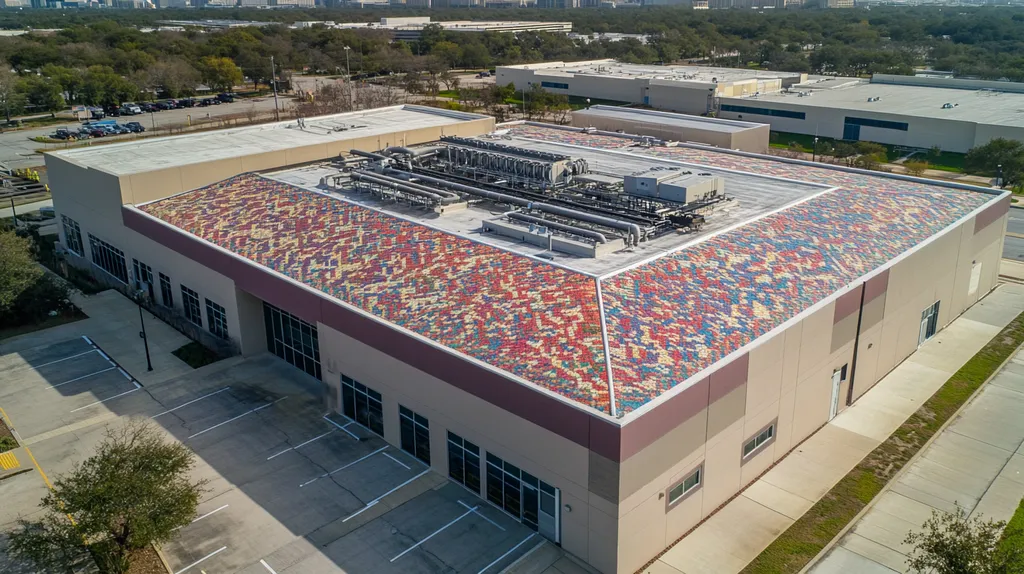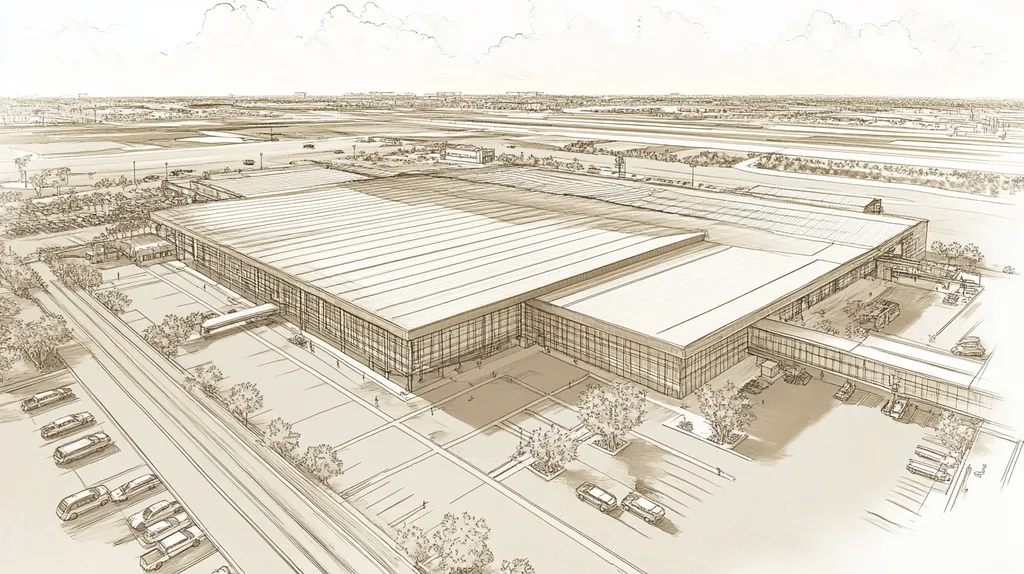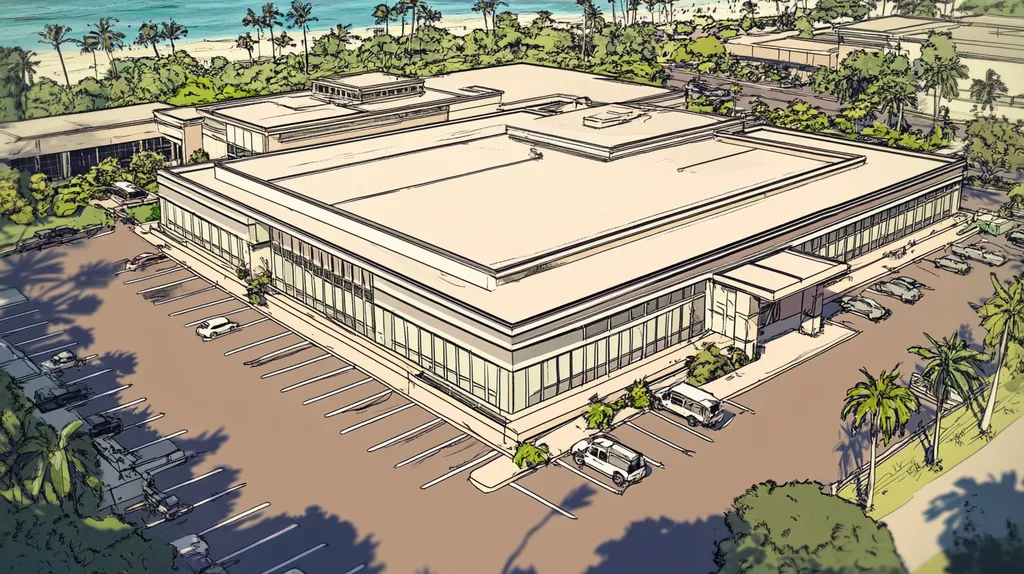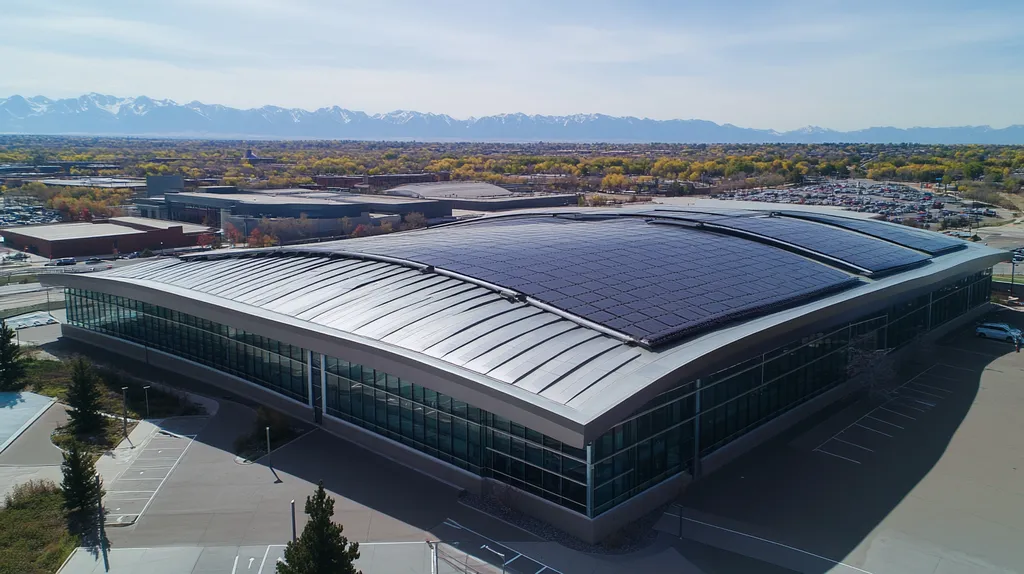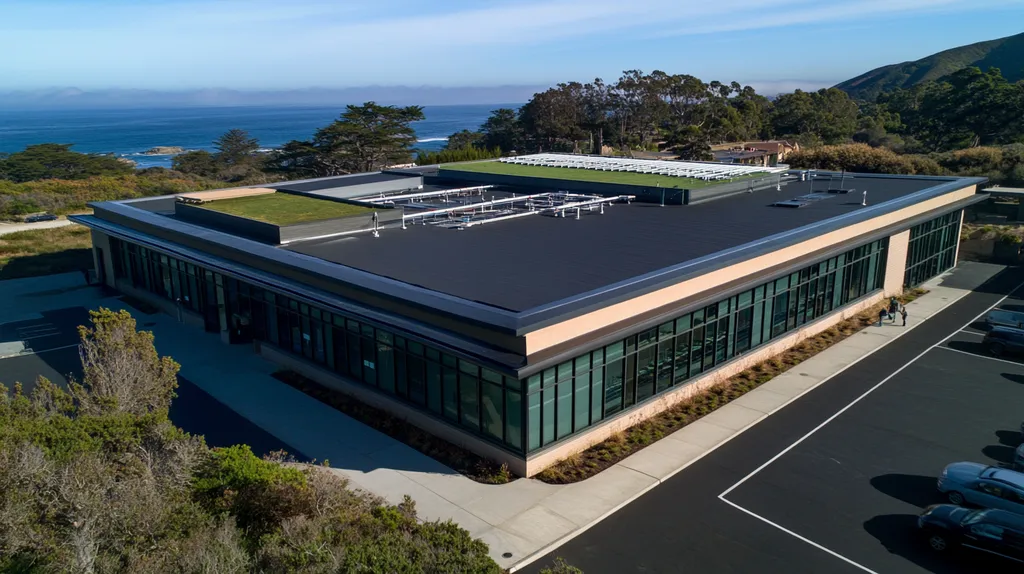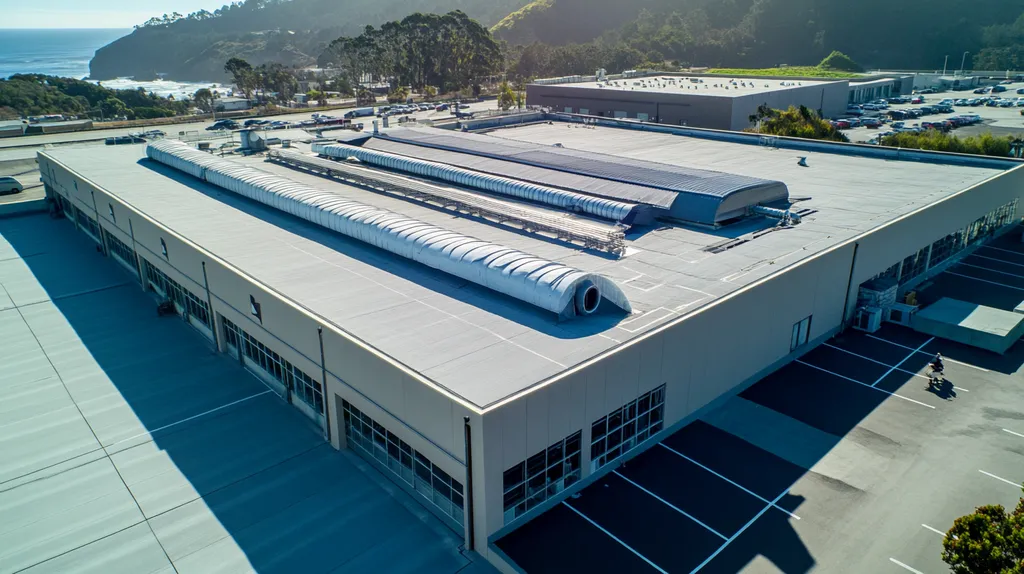In today’s commercial real estate market, misconceptions about modified bitumen roofing insulation cost property owners millions in wasted energy expenses annually. Studies indicate that buildings with inadequate roof insulation systems waste up to 30% more energy than properly insulated structures.
Despite modified bitumen’s widespread use in commercial applications, confusion persists about its actual insulation properties, leading to poor material choices and inefficient installations.
This comprehensive analysis examines the realities of modified bitumen insulation performance, addresses common misconceptions, and provides evidence-based solutions for optimizing commercial roof systems.
SECTION 1: COMMON MISCONCEPTIONS
In the realm of commercial roofing, misunderstandings surrounding modified bitumen insulation properties can lead to avoidable costs and inefficiencies. Many property owners mistakenly believe that all modified bitumen products offer equivalent insulation, which can significantly undermine both energy savings and roof durability. Identifying and addressing these common misconceptions is vital for making informed decisions about roofing solutions.
Misunderstanding Modified Bitumen Composition
Property owners and facility managers often think of modified bitumen as a one-size-fits-all material. In truth, modified bitumen comprises various polymer-modified asphalt blends, each with unique properties that affect thermal performance. This difference can have a profound impact on a roof’s insulation capability and energy efficiency.
Some modified bitumen products include additives that enhance insulation characteristics, boosting reflectivity or thermal resistance. Conversely, other variants might lack these enhancements, resulting in higher energy consumption.
To make the best choice, property owners should consult with suppliers to discern the specific insulation values of each modified bitumen product. This understanding can dramatically influence overall energy usage and interior comfort levels, making it critical to select wisely.
Overestimating Single-Layer Efficiency
Many property owners assume that a single-layer modified bitumen roof is sufficient for insulation. However, this assumption often does not hold true, especially in varying climate conditions. Overlooking the advantages provided by additional insulation layers can reduce overall energy efficiency.
In colder climates, a single layer may struggle to retain heat, leading to steeper heating costs during winter months. In contrast, introducing an insulation layer beneath the membrane can significantly enhance energy efficiency by preserving warmth.
A multi-layer system creates a robust barrier against heat loss, ensuring lower energy expenses and improved comfort. Understanding the value of layering strategies is essential for optimal insulation performance in modified bitumen roofing.
Ignoring the Role of Insulation
The efficiency of a modified bitumen roof hinges not only on its surface materials but also on the crucial role of insulation, which is often overlooked by property owners. Insulation is key to regulating indoor temperatures, increasing energy efficiency, and enhancing overall comfort.
By selecting the right type of insulation, property owners can achieve substantial returns on investment through reduced heating and cooling requirements. Notably, adequate insulation can also extend the lifespan of the roofing system.
Thus, it’s essential for property owners to consult roofing professionals to assess insulation options and determine their synergy with modified bitumen roofs. Recognizing the pivotal role of insulation ensures a more effective and sustainable roofing solution. (source: WxTite)
SECTION 2: PRACTICAL IMPLICATIONS
The insulation properties of modified bitumen are crucial for property owners and facility managers aiming to optimize building performance. Poor insulation can lead to substantial energy loss, causing heating and cooling costs to skyrocket. Research indicates that buildings with inadequate insulation may waste as much as 30 percent of their energy. A solid understanding of modified bitumen insulation can ensure a more energy-efficient, durable, and cost-effective roofing solution.
Impact on Energy Efficiency
Modified bitumen roofs are designed to minimize energy consumption through superior insulation. Their multi-layered construction offers exceptional thermal resistance, keeping conditioned air within the building for extended periods.
This approach not only helps manage energy bills but also significantly reduces the property’s carbon footprint. Even a slight reduction in energy use can lead to considerable annual savings.
Additionally, incorporating advanced insulation materials into modified bitumen systems can yield even greater efficiency. For instance, reflective surfaces can diminish heat absorption, resulting in lower air conditioning costs during the sweltering summer months.
Ultimately, the enhanced energy efficiency provided by modified bitumen roofs can create a meaningful impact on the operational budgets of commercial properties.
Effects on Roof Longevity and Durability
Investing in a modified bitumen roofing system can result in a roof that lasts between 20 to 30 years or even longer, provided it is installed correctly. The robust design of these roofs, characterized by their reinforced layers, enhances durability against severe weather conditions.
Moreover, the insulation qualities of modified bitumen aid in maintaining a consistent temperature, reducing fluctuations that can lead to material fatigue and eventual structural failure.
Commercial roofs with adequate insulation are also less susceptible to pest infiltration and moisture-related issues. This protective factor contributes to fewer repairs and a longer lifespan for the roofing materials.
In conclusion, the durability and extended life expectancy associated with modified bitumen roofs provide compelling reasons for their choice in commercial applications.
Influence on Maintenance Costs
Having effective insulation in modified bitumen roofing systems can lead to significant reductions in maintenance costs. Roof systems that are well-insulated maintain their integrity more effectively, meaning they require less frequent repairs.
Additionally, lower energy consumption results in HVAC systems not operating at peak loads as often, which reduces wear and tear. This can extend the lifespan of these systems, ultimately lowering maintenance expenses.
Moreover, high-quality insulation materials can help avert common issues like leaks and mold, which can lead to expensive remediation efforts.
Consequently, choosing modified bitumen with effective insulation can lead to a more predictable and manageable maintenance budget for commercial property owners.
SECTION 3: COST OF MISINFORMATION
Misinformation about the insulation properties of modified bitumen roofs can have serious financial consequences for commercial property owners. Studies indicate that poorly insulated roofs can increase energy bills by as much as 30%. Understanding the actual performance of modified bitumen is essential, as misconceptions can lead to poor investments, inflated energy costs, and unnecessary repair expenses. This section examines the concrete financial repercussions of misunderstanding the insulation capabilities of modified bitumen roofs.
Financial Consequences of Poor Insulation
Inadequate insulation has profound financial impacts on commercial roofs. Property owners often face elevated operational costs due to ineffective thermal performance. For instance, if a modified bitumen roof fails to perform as expected, the energy required for heating and cooling can skyrocket.
This misunderstanding can result in property managers neglecting critical enhancements to insulation, leading to overspending on heating and cooling solutions they believe to be adequate. These miscalculations can strain budgets and limit resources for other essential projects.
Moreover, poor insulation contributes to accelerated roof deterioration, which increases repair costs over time. A strategic approach to insulation options can mitigate these expenses and prolong the roof’s lifespan. The financial implications of making uninformed insulation decisions are significant and often unrecognized.
Thus, stakeholders must prioritize education on the insulation characteristics of modified bitumen. Investing time and resources into understanding these factors can lead to improved financial management and long-term savings.
Increased Energy Consumption Costs
One immediate result of misinformed insulation choices is increased energy consumption costs. As energy prices continue to rise, a well-insulated roof can lead to substantial savings. Conversely, property owners who underestimate the insulation value of modified bitumen pay significantly more in energy bills.
For example, buildings with inadequate insulation may experience a dramatic increase in heating and cooling expenses during extreme weather, potentially translating to thousands of dollars in additional costs annually.
Additionally, when insulation underperforms, HVAC systems face increased strain, leading to higher maintenance costs over time. This combination of mounting energy consumption and equipment wear can severely impact financial projections.
By gaining a clear understanding of proper insulation, property owners can ensure their facilities operate efficiently. This knowledge enables better decision-making aligned with budget constraints and energy-saving initiatives.
Unnecessary Repair and Replacement Expenses
The financial pitfalls associated with misinformation about modified bitumen insulation also extend to unnecessary repair and replacement costs. Misguided beliefs about insulation properties can cause premature wear, resulting in more frequent repairs.
When insulation fails, moisture can collect, leading to leaks and structural damage. Facility managers might assume they need to replace an entire roofing system when a straightforward insulation upgrade would suffice.
Such miscalculations can divert funds from other critical maintenance needs, leading to significant expenditures. By fostering a better understanding of modified bitumen insulation, property owners can more accurately gauge when repairs are genuinely necessary, avoiding premature financial drains.
Ultimately, being well-informed about insulation capabilities protects not only the roof but also the budget. A proactive approach to roofing management can help prevent future crises and associated costs.
SECTION 4: REALITY CHECK
Understanding the insulation properties of modified bitumen roofing is essential for property owners who want to ensure energy efficiency and comfort within their buildings. Many mistakenly believe that modified bitumen alone provides sufficient thermal resistance. Unfortunately, this assumption can lead to higher energy costs and less enjoyable indoor conditions. This section clarifies the actual insulation properties of modified bitumen, the importance of multi-layered design, and how surfacing and coatings play significant roles in enhancing roof performance.
Actual Insulation Properties of Modified Bitumen
The insulation capabilities of modified bitumen are often overstated. While this material does deliver some thermal resistance, it typically falls short of current energy efficiency standards when used alone. The R-value of modified bitumen generally ranges from R-1 to R-4, based on its formulation and thickness.
For comparison, materials like rigid foam insulation can achieve R-values exceeding R-6 per inch. This difference underscores the need to consider additional insulation options when employing modified bitumen roofing systems.
Moreover, the effectiveness of insulation greatly relies on accurate installation. Improperly positioned insulation can create air leaks and thermal bridging, ultimately negating the expected benefits.
Thus, depending solely on modified bitumen without enhancements undermines a facility’s overall energy efficiency and indoor climate management.
Importance of Multi-Layered Systems
In the commercial roofing sector, employing a multi-layered system considerably boosts insulation performance. By layering modified bitumen with other insulation materials, thermal resistance can be significantly improved. Using rigid insulation or a layer of polymer-modified bitumen as a base enriches energy efficiency.
This layered design offers not only increased R-value but also important redundancy against leaks and potential water damage. A thoughtfully constructed multi-layered system effectively blends the advantages of each material for optimal results.
For instance, placing an insulated cover board beneath modified bitumen can curtail heat transfer and enhance the system’s durability. The outcome is a roofing solution that better withstands harsh weather while also decreasing energy costs.
Investing in these advanced roofing systems proves to be a proactive measure that yields significant benefits in both insulation and the resilience of buildings.
Role of Surfacing and Coatings
The surfacing and coatings applied to modified bitumen roofs are vital in maximizing insulation efficiency. The right reflective coating can greatly minimize heat uptake, aiding in the maintenance of comfortable indoor temperatures. For example, a white reflective coating serves to cool roofs, lessening dependence on air conditioning.
Additionally, surface treatments bolster UV resistance, mitigating thermal degradation and extending the effectiveness of insulation. This dual protection is essential for both the modified bitumen layer and any underlying insulating materials.
Neglecting the significance of appropriate surfacing and coatings can lead to premature roof failures and diminished insulation performance. Consequently, property owners must integrate these considerations into their roofing strategies to guarantee sustained performance and cost savings.
By comprehending and investing in effective surfacing solutions, facility managers can fully leverage the advantages offered by modified bitumen roofs, ensuring their buildings maintain energy-efficiency throughout their lifespan.
SECTION 5: EVIDENCE-BASED ALTERNATIVES
Making informed roofing decisions is critical for property owners and facility managers, as the wrong choices can lead to inflated energy costs and delayed returns on investment. Inadequate insulation or poor material selection can significantly compromise energy efficiency, particularly with rising energy prices. This section provides actionable strategies to enhance roofing insulation and overall efficiency, focusing on the importance of adequate insulation layers, appropriate modified bitumen types, and the application of energy-efficient coatings.
Using Proper Insulation Layers
Insulation plays a pivotal role in the performance of a modified bitumen roof, directly influencing temperature regulation within the building. Proper insulation can lead to substantial energy savings by effectively maintaining desired indoor temperatures. For instance, utilizing high R-value insulation materials can significantly limit heat transfer, helping buildings remain warm in winter and cool in summer.
To identify the right insulation, property owners must assess their building’s specific requirements. Rigid foam boards and spray foam insulation are often ideal for low-slope roofs due to their high thermal resistance. These materials are designed to minimize heat loss, enhancing overall energy efficiency.
Furthermore, proper installation is essential; adequately sealing insulation joints can prevent air leaks that undermine energy efficiency. Even the best insulation materials are rendered ineffective without careful installation techniques.
Through ongoing evaluations and updates to existing insulation strategies, property owners can account for changes in occupancy or local climate shifts. Adopting a proactive approach to insulation can yield long-term cost savings while ensuring occupant comfort.
Selecting the Right Modified Bitumen Type
The selection of modified bitumen types is crucial, as not all membranes provide the same thermal efficiency. Options typically include SBS (Styrene-Butadiene-Styrene) and APP (Atactic Polypropylene), each offering distinct advantages depending on environmental conditions. For instance, SBS-modified bitumen is known for its excellent flexibility and adhesion, which is particularly beneficial in regions with drastic temperature changes.
In contrast, APP’s enhanced UV resistance makes it suitable for areas exposed to high sunlight, offering a longer lifespan against the elements. Choosing the appropriate type of modified bitumen can substantially affect the roofing system’s overall performance, leading to fewer repairs and lower lifecycle costs.
For example, employing a polymer-modified system can greatly enhance not just longevity but also durability against severe weather conditions, further underscoring the importance of tailored selections based on environmental factors.
Aligning the chosen modified bitumen with the building’s specific needs promotes better performance and sustainable energy practices, offering a strategic approach to roofing applications.
Implementing Energy-Efficient Coatings
Energy-efficient coatings represent a strategic enhancement for modified bitumen roofing systems, capable of reflecting solar heat and significantly reducing roof temperatures. These coatings can lower rooftop temperatures by as much as 30 degrees Fahrenheit, leading to decreased reliance on air conditioning and lower energy costs.
Beyond insulation improvements, these coatings serve as an added defense against environmental factors, extending the life of roofing materials while minimizing wear and tear. This is particularly beneficial in urban environments, where heat can accumulate, further increasing energy demands.
Additionally, applying reflective coatings may qualify buildings for energy efficiency incentives, helping further reduce operational expenses. Integrating such technology represents a forward-thinking decision for property owners committed to sustainability.
By prioritizing energy-efficient coatings in their roofing strategies, property owners not only enhance immediate comfort but also contribute to long-term sustainability, potentially increasing property value through lower utility costs.
SECTION 6: TEST AND VERIFY
As energy costs continue to climb and environmental considerations become increasingly vital, the insulation performance of modified bitumen roofs requires rigorous scrutiny. Inadequate insulation can result in severe thermal losses and escalated energy expenses, posing a significant financial burden for commercial property owners. To ensure that insulation performance expectations are not only met but surpassed, thorough testing and monitoring post-installation are essential. This section delves into essential strategies for conducting thermal resistance tests, monitoring energy consumption, and implementing routine maintenance checks.
Conducting Thermal Resistance Tests
Conducting thermal resistance tests is fundamental in assessing the performance of modified bitumen insulation under various environmental conditions. Utilizing tools such as infrared thermography enables facility managers to detect thermal bridges and identify areas with insufficient insulation. These evaluations not only highlight weaknesses but also guide necessary adjustments to enhance energy efficiency.
Conducting these tests during extreme weather conditions offers valuable insights; for instance, assessments on a hot summer day may reveal considerable temperature differences across the roof’s surface. Comprehensive documentation of these variations provides a clearer understanding of overall insulation performance.
Engaging third-party professionals to perform these tests can add credibility to the findings. Independent evaluations provide property owners with confirmed data regarding their roofs. Regular thermal testing should be incorporated into maintenance schedules to continuously track insulation performance.
The insights gained from these evaluations allow property owners to make informed decisions about potential upgrades or enhancements, ensuring their roofs operate at optimum efficiency.
Monitoring Energy Consumption Post-Installation
Monitoring energy consumption after installing modified bitumen roofs is crucial for validating their insulation effectiveness. By establishing a baseline of energy use before and after installation, facility managers can evaluate the impact of insulation on heating and cooling costs, ensuring long-term savings and confirming the value of their initial investments.
Implementing smart meters and energy management systems facilitates real-time tracking of energy consumption, helping to identify discrepancies between expected savings and actual use. Detecting potential insulation issues promptly can mitigate costly repairs in the future.
Consistent monthly analysis of energy bills can also highlight trends. If unexpected spikes in energy use are observed, especially post-installation, further investigation may be warranted. Collaboration with roofing professionals can then address any underlying issues impacting insulation performance.
Continuous monitoring fosters a proactive approach to roof management, enabling property owners to identify patterns that inform future renovations and improve overall performance.
Regular Roof Inspections and Maintenance Checks
Conducting regular roof inspections is vital for maintaining the performance and integrity of modified bitumen insulation. These inspections should encompass both the visible roofing material and the insulation layer beneath, ensuring that any signs of damage, wear, or moisture intrusion are identified early.
Annual inspections help pinpoint potential problems before they escalate, revealing hidden issues such as cracks and blisters that could undermine insulation effectiveness. Promptly addressing these concerns can significantly prolong the roof’s lifespan.
In addition to scheduled inspections, property owners should perform routine maintenance checks, especially after harsh weather conditions. Heavy rainfall or strong winds can introduce unforeseen damage, necessitating quick evaluations to facilitate immediate repairs.
Establishing a comprehensive roof maintenance program is essential for ensuring optimal insulation performance. Consistent upkeep safeguards the roof and maintains the energy efficiency benefits that modified bitumen systems provide.
Looking Ahead
The financial impact of misunderstanding modified bitumen insulation properties costs commercial property owners an estimated $3.6 billion annually in wasted energy expenses.
Research demonstrates that buildings utilizing proper modified bitumen insulation systems, combined with appropriate layers and coatings, can reduce energy consumption by up to 30% compared to poorly insulated structures.
As energy costs continue to rise, the stakes for making informed decisions about commercial roof insulation have never been higher.
Property owners and facility managers must prioritize evidence-based approaches, including thermal resistance testing, energy consumption monitoring, and regular maintenance checks to ensure optimal insulation performance.
The future of commercial roofing lies in understanding and implementing proper modified bitumen insulation systems that deliver measurable returns on investment while supporting sustainability goals.
FREQUENTLY ASKED QUESTIONS
Q. What common misconceptions exist about commercial roof insulation?
A. Many property owners incorrectly believe all modified bitumen products provide similar insulation. In reality, different blends exist, each with distinct thermal performance characteristics. Misunderstanding this can lead to poor decisions regarding energy savings and roof durability.
Q. How do insulation properties affect energy efficiency in commercial roofs?
A. The insulation properties of modified bitumen roofs significantly impact energy consumption. Effective insulation can keep conditioned air within a building, lowering heating and cooling costs and reducing the overall carbon footprint.
Q. What are the financial consequences of poor insulation for industrial roofs?
A. Insufficient insulation can lead to increased operational costs as energy bills rise dramatically. Poor thermal performance often causes accelerated roof deterioration, resulting in expensive repairs over time and potential budget constraints for property owners.
Q. What is the importance of multi-layered insulation for commercial roofs?
A. Employing a multi-layered system significantly enhances insulation performance. It boosts thermal resistance, mitigates heat transfer, and provides redundancy against leaks. This thoughtful design approach often results in better energy efficiency and helps maintain optimal indoor conditions.
Q. How do coatings affect the insulation performance of modified bitumen roofs?
A. Proper coatings enhance insulation by reflecting solar heat, reducing roof temperatures, and improving energy efficiency. They also protect the underlying materials from UV degradation, ultimately prolonging the lifespan of the roofing system.
Q. What testing methods are recommended for verifying roof insulation performance?
A. Thermal resistance tests, including infrared thermography, help assess insulation performance. Additionally, monitoring energy consumption post-installation provides insights into insulation effectiveness, ensuring long-term savings are achieved.
Q. What alternative materials can enhance commercial roof insulation?
A. Using rigid foam boards or spray foam insulation can improve the thermal resistance of modified bitumen roofs. These materials effectively limit heat transfer and can be tailored to meet specific building requirements for optimal energy efficiency.

